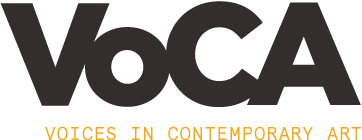Editor’s Note
We are pleased to be launching VoCA Journal, a digital information-sharing platform for artists and their collaborators. Our contributors–including fabricators, curators, conservators, registrars, art handlers, collectors, gallerists, and those responsible for artist estates and foundations–will be invited to discuss innovative, cross-disciplinary approaches to the research, display, and conservation of contemporary art. Published three times yearly, VoCA Journal will highlight and archive progressive artist-centered projects, thereby creating a dynamic repository for these initiatives while also connecting members of our network both locally and across the globe.
In this issue, Pip Laurenson (Head of Collection Care Research at Tate) and Jill Sterrett (Director of Collections at SFMOMA) discuss the genesis of Media in Transition, a conference running from November 18 through 20, 2015 at Tate Modern. Via case studies of artists including Tacita Dean, Tania Bruguera and Ceal Floyer, Laurenson unpacks some of the challenges that time-based media artworks pose for museums in the 21st century. Participants in the conference will seek to answer a nucleus of key questions: Is it possible to collect an artist’s practice along with their work? Does our understanding of the life and death of an artwork depend upon the cultures of conservation and curatorship? And, how might we explore the experience of a visual artwork from a multisensory perspective? In a related article, Ingrid Schaffner (Curator, Carnegie International 2018) describes the process of organizing the first major posthumous survey of work by artist Jason Rhoades, an exhibition that featured an abundance of heaving, kinetic elements and an environment of controlled chaos. Schaffner discovered that the work of an artist like Rhoades requires skilled interpreters to restage it and demands active participation (on the part of both its stewards and its audience) to remain viable.
Two artists are interviewed in this issue, Frank Stella and Matthew Ritchie. On the occasion of Frank Stella: A Retrospective–on view at the Whitney Museum of American Art through February 7, 2016 and traveling to the Modern Art Museum of Fort Worth–Michael Auping (Chief Curator, Modern Art Museum of Fort Worth) took the opportunity to continue an ongoing dialogue with Stella about the nature of abstraction and the materiality of his work. He finds Stella, both the man and his art, to be productively counter-intuitive and at times confrontational. Stella similarly admits that his use of color “is meant to be aggressive and kind of contentious, even misleading within the composition.”
My own conversation with Matthew Ritchie has been unfolding for about a decade, mapping to several exhibitions we worked on together, and beyond. In addition to painting, drawing, sculpture, and media projections, language could also be described as a material for Ritchie, one which he models, attenuates and recombines in humorous and provocative ways. As was also the case with Jason Rhoades, whose work he admires, each new project is a thought experiment that Ritchie is inclined to push to its limits.
I speak for everyone at VoCA in expressing our gratitude to the contributors who have been so generous in helping us to launch this new platform. We look forward to continuing our discussions with them, and to bringing more voices into the mix in subsequent issues.
Robin Clark


